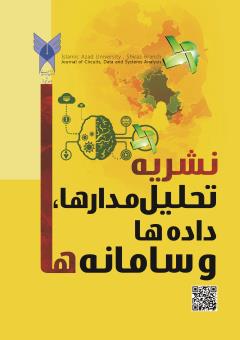کاربرد اینترنت اشیا در سلامتی و تناسب اندام هوشمند
محورهای موضوعی : مهندسی کامپیوتر و فناوری اطلاعات
راضیه شیردل
1
*
,
زهرا مقصودزاده سروستانی
2
![]()
1 - اداره اندازه شناسی اوزان و مقیاسها، اداره کل استاندارد استان فارس،شیراز، ایران
2 - گروه برق ، واحد شیراز، دانشگاه آزاد اسلامی،شیراز، ایران
کلید واژه: اینترنت اشیا, محیط هوشمند, سلامتی و تناسب اندام, تناسب اندام هوشمند,
چکیده مقاله :
مفهوم زندگی هوشمند با هدف بهینه سازی محیط اطراف برای سهولت استفاده و سهولت در نصب است. اینترنت اشیا چهارمین مرحله در تکامل اینترنت با هدف دیجیتالی کردن جهان است. یک شهر هوشمند به ما امکان می دهد دستگاه ها را از راه دور نظارت، مدیریت و کنترل کنیم و همچنین اطلاعات عملی و بینش جدیدی را از جریان های عظیم داده های بلادرنگ تولید کنیم. یک شهر هوشمند از شش جز تشکیل شده است که عبارتند از: خانه هوشمند، اقتصاد هوشمند، سالنهای ورزشی هوشمند، اداره هوشمند، پردیس دانشگاهی هوشمند و حکمرانی هوشمند . هدف این مقاله ارائه مروری مختصر بر اجزای یک باشگاه هوشمند و نقش اینترنت اشیا در سلامتی و تناسب اندام است.
The concept of smart living aims to optimize the surrounding environment for ease of use and ease of installation. The Internet of Things is the fourth stage in the evolution of the Internet with the aim of digitizing the world. A smart city allows us to remotely monitor, manage and control devices, as well as generate actionable information and new insights from massive streams of real-time data. A smart city consists of six components, which are: smart home, smart economy, smart sports halls, smart administration, smart university campus and smart governance. The purpose of this article is to provide a brief overview of the components of a smart gym and the role of IoT in health and fitness.
[1] Moser, K., Harder, J., & Koo, S. G. (2014, October). Internet of things in home automation and energy efficient smart home technologies. In 2014 IEEE International Conference on Systems, Man, and Cybernetics (SMC) (pp. 1260-1265). IEEE.
[2] Alva, A. S., Dinesh, A. S., & Chavan, C. P. (2022, December). IoT for Enabling Smart environment system. In 2022 International Conference on Smart Generation Computing, Communication and Networking (SMART GENCON) (pp. 1-6). IEEE
[3] Wang, M., Zhang, G., Zhang, C., Zhang, J., & Li, C. (2013, June). An IoT-based appliance control system for smart homes. In 2013 fourth international conference on intelligent control and information processing (ICICIP) (pp. 744-747). IEEE.
[4] Yang, H., Lee, W., & Lee, H. (2018). IoT smart home adoption: the importance of proper level automation. Journal of Sensors, 2018.
[5] Passos J, Lopes SI, Clemente FM, Moreira PM, Rico-González M, Bezerra P, Rodrigues LP. Wearables and Internet of Things (IoT) Technologies for Fitness Assessment: A Systematic Review. Sensors (Basel). 2021 Aug 11;21(16):5418. doi: 10.3390/s21165418. PMID: 34450860; PMCID: PMC8400146.
[6] E.T. Luhanga, A.A.E. Hippocrate, H. Suwa, Y. Arakawa, K. Yasumoto, Identifying and evaluating user requirements for smartphone group fitness applications, IEEE Access 6 (2018) 3256–3269
[7] T. Wyss, M. Boesch, L. Roos, C. Tschopp, K.M. Frei, H. Annen, R. La Marca, Aerobic fitness level affects cardiovascular and salivary alpha amylase responses to acute psychosocial stress, Sports Med.-Open 2 (1) (2016) 1–11.
[8] H. Lee, J. Kwon, Survey and analysis of information sharing in social IoT, in: 2015 8th IEEE International Conference on Disaster Recovery and Business Continuity (DRBC), 2015, pp. 179–184
[9] Farrokhi, A., Farahbakhsh, R., Rezazadeh, J., & Minerva, R. (2021). Application of Internet of Things and artificial intelligence for smart fitness: A survey. Computer Networks, 189, 107859. [10] Yong, B., Xu, Z., Wang, X., Cheng, L., Li, X., Wu, X., & Zhou, Q. (2018). IoT-based intelligent fitness system. Journal of Parallel and Distributed Computing, 118, 14-21.

